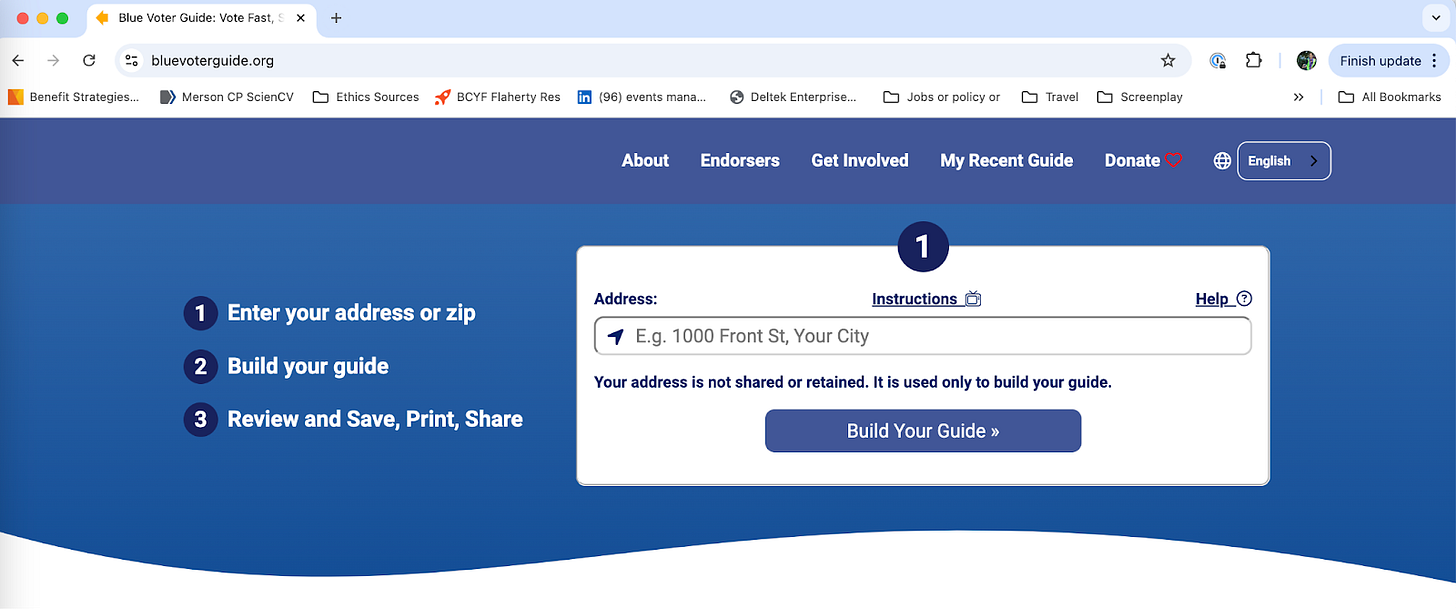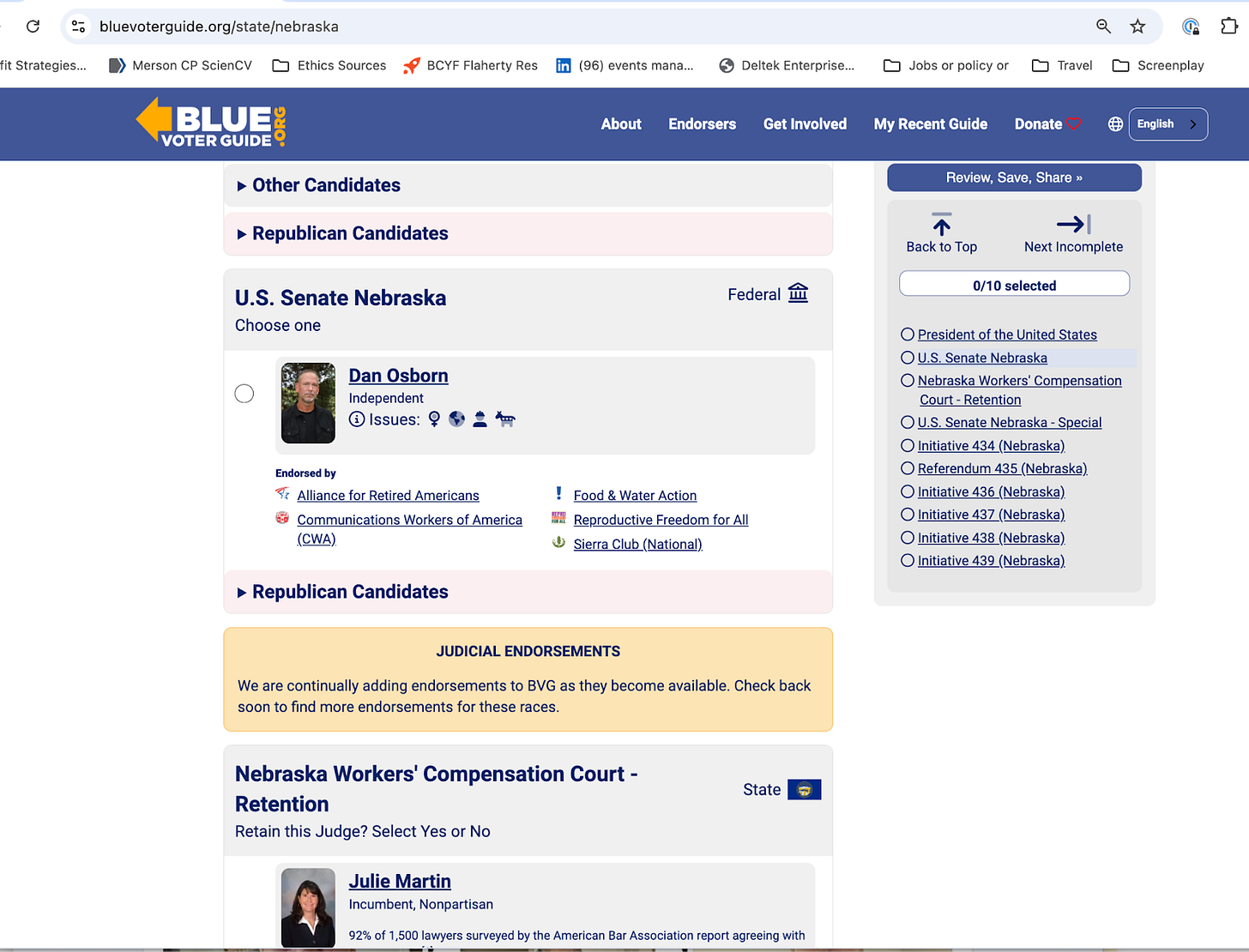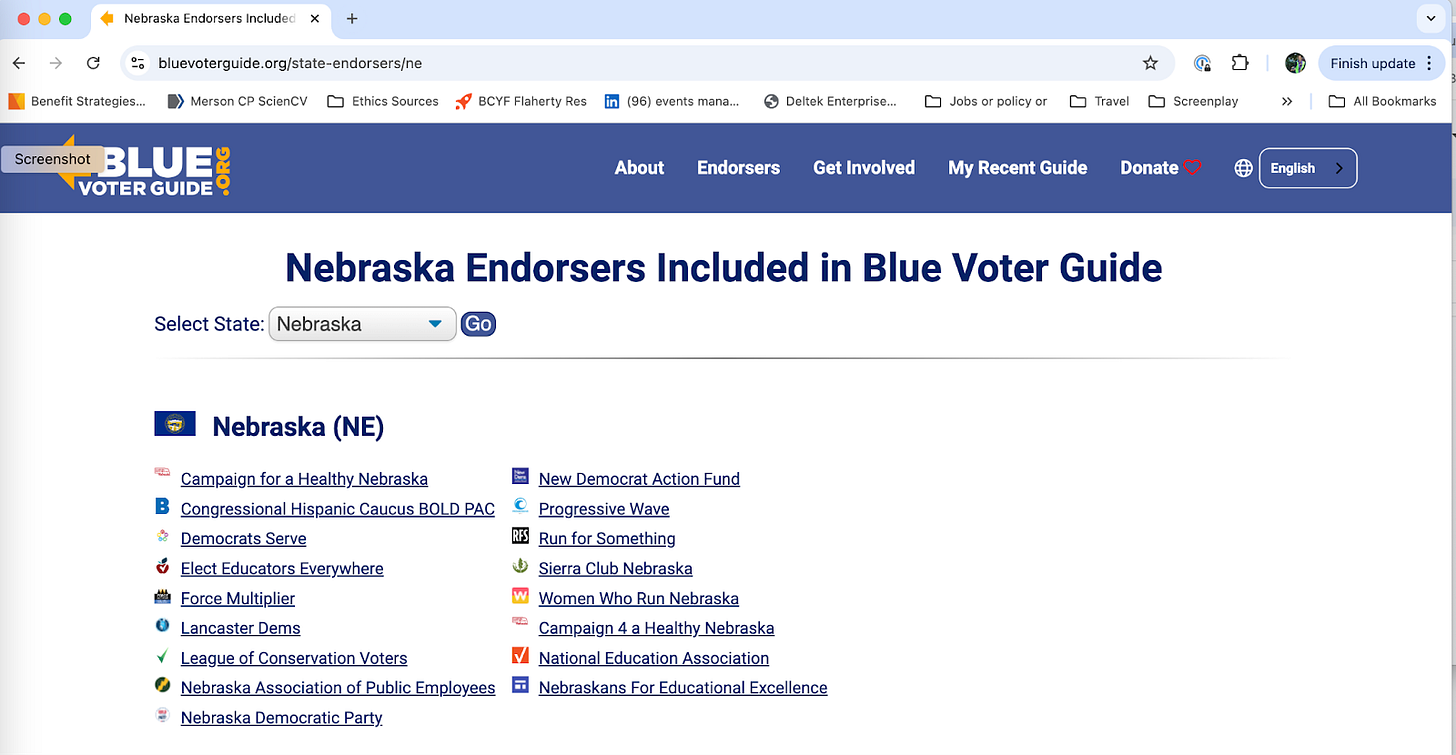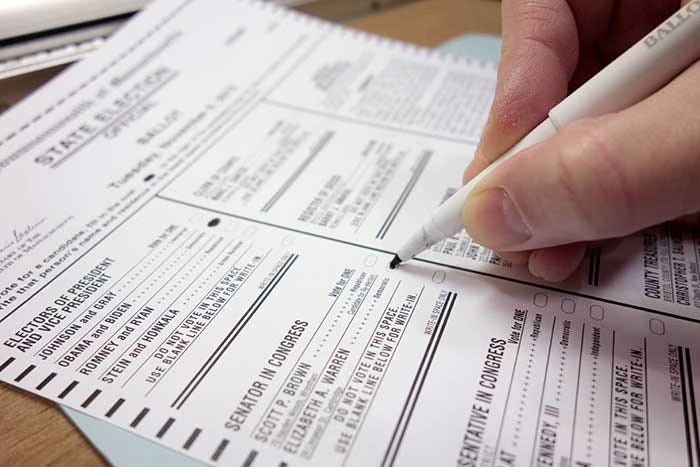Complex Ballots? What Could Go Wrong?
Many voters will face a ballot with long lists of names and offices, as well as confusingly written ballot initiatives. Blue Voter Guide to the rescue!
By Martha Merson
October signals a shift in the election cycle as voters across the country begin receiving mail-in ballots. Wayne Liebman has had his eye on this moment. “I want every volunteer and campaign worker to know: voters who are put off by a long, complicated-looking ballot won’t be voting.”
Blue Voter Guide is a tool that is quick, smart, and pro-democracy. The guide takes on the problem of overlong, complex ballots that overwhelm voters.
Liebman, like many of us, was jolted into action by the outcome of the 2016 election Since then, he has dedicated thousands of hours to developing the Blue Voter Guide. As Field Team 6’s Director of Operations, Liebman brought Blue Voter Guide to team founder Jason Berlin and Chief Operating Officer Dale Roy Robinson. Both provided support to get bluevoterguide.org up and running. “I was already building Field Team 6 volunteer teams,” says Liebman, “so it was a natural step to recruit volunteers to build a Blue Voter Guide team.” Their goal is to help eligible voters complete complicated ballots. “Otherwise, we are leaving hundreds of thousands of votes on the table.”
Using Blue Voter Guide, a voter enters his/her/their address and – voila – local, state, and federal candidates and judges, along with ballot measures, appear on screen – with their endorsements.
With a click, a voter can read more about the candidates, as well as about each endorsing organization. Users can also look back in time, reading endorsements dating to 2022.
Blue Voter Guide also allows users to choose any state and see a statewide list of candidates and measures, along with endorsing organizations, nonprofits, unions, and local Democratic groups. (You don’t need to start with an address.) Or you can select a specific issue, such as climate change, or a specific endorsing group, as a way to identify candidates.
Or
When confronted with names without a party label, last minute voters often have no way to assess the candidates’ values. Blue Voter Guide solves that problem, too. “In non-partisan races,” Liebman said, “we provide a quick X-ray of candidates by identifying them by issue and affiliation, as (for example) Republican, Democrat, Pro-choice, anti-abortion, pro democracy, MAGA, election denier, Mom’s for Liberty, etc. Using Blue Voter Guide, voters can preview the ballot, make choices, and save them for reference later. Nothing else makes it that simple.”
Blue Voter Guide is powered by 100 volunteers who currently manage 70,000 endorsements from 3,000 endorsing groups in 50 states for the coming election. “Volunteers seek out the URL of endorsing organizations,” Liebman explained. “That could be their organization website or a Facebook page. Once the volunteer finds the endorsement page of the website, we have software that pulls in all the candidates. Currently we have a range of endorsing organizations–from Black Lives Matter to Moms for Gun Safety.”
In preparing Blue Voter Guide, volunteer researchers focused on a particular state or a portion of a state, filling in cells on a master spreadsheet. Their work gives canvassers and phone bankers a way to help confused voters.
Remy Kothe from Downtown Nasty Women in NYC is a volunteer who pores over websites with the mission of making voting easier. “I’m the one in my circle that people call before heading into vote,” she says. “I can help people navigate a ballot.” Remy learned about BVG while textbanking for Michigan in the midterms and then again while working with Field Team 6 in NC.
“I used the tool in 2022. It’s easy. Originally it only showed candidates in swing states and I wondered, ‘Why don’t we have it everywhere?’ Then I asked if I could volunteer for Blue Voter Guide. As a volunteer, you can research endorsing organizations or assist with social media. I do a bit of both.”
Joining Facebook groups in IN, IL, MI, WI, Remy helped spread Blue Voter Guide’s messaging. “Field Team 6 and Blue Voter Guide come up with the creative and we share it. The point is to remind people: know where your candidates stand. Knowing whether someone is backed by gun safety advocates or the NRA is a great way for people to know where candidates stand.”
The guide is all volunteer-run. Tech experts donate their time, giving free programming worth millions of dollars. Yet there are still bills to pay. In addition to paying for the website and servers, BVG pays about $1,000 per state for election data. What started as a germ of an idea related to assessing ballot propositions has expanded in scope. The Bluevoterguide.org website is now available in Spanish and Vietnamese; users simply click to choose the language. The team will be looking to incorporate a color-blind viewer and voice-activation for visually impaired users in 2025. Meanwhile, Liebman notes, “We have scaled up to make sure the platform can accommodate millions of users.” Half will hit in the next couple weeks, Liebman predicts, causing server costs to skyrocket.
Liebman is committed to helping volunteers and groups spread the word. He regularly speaks to activist groups. BVG has designed stickers, handouts, and postcards, which anyone can download for free and print. Volunteers and organizers can also order and pay for BVG postcards, stickers, magnets, yard signs, and T-shirts. Liebman hopes the merchandise will draw voters to the BVG website where they can review information, build a ballot, and save their choices, or make a donation.
Once people use BVG, they are convinced. Some even find it fun. Volunteers doing voter engagement can offer BVG as a gift. There is no cost to users so no big sales pitch is needed. The predictable results of sharing BVG? More votes for Dems and the complex ballots conquered!
Thanks to Remy Kothe and Wayne Liebman for their contributions to this article.











https://www.youtube.com/watch?v=kdUliKVQ6j4
Nice explanation by Sylvia